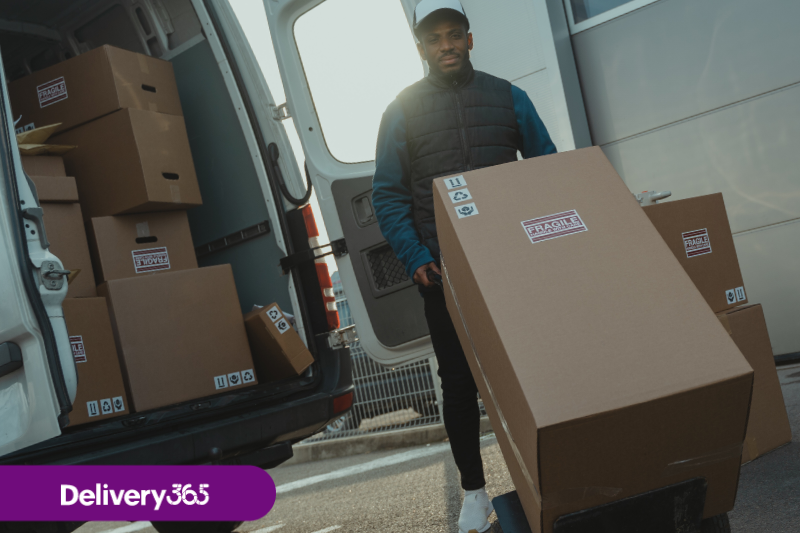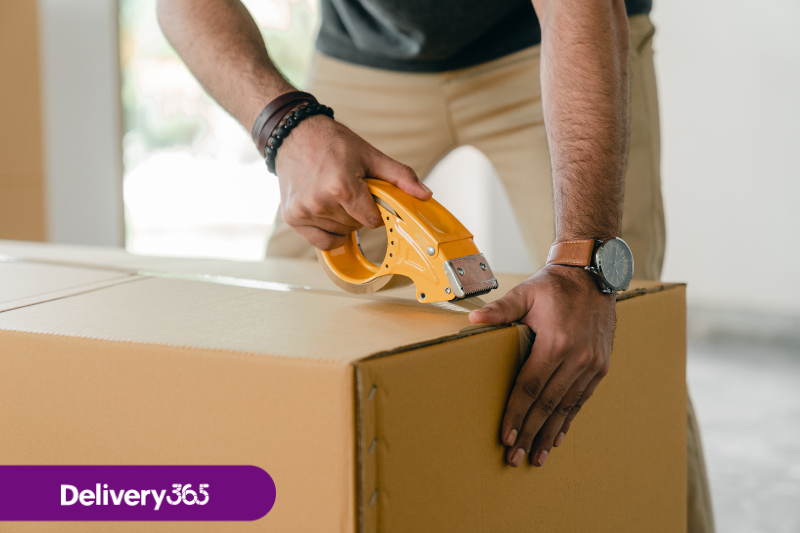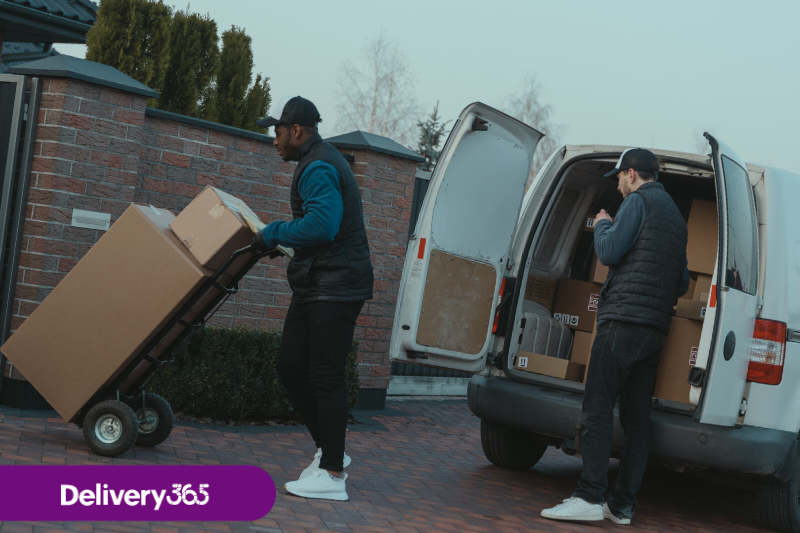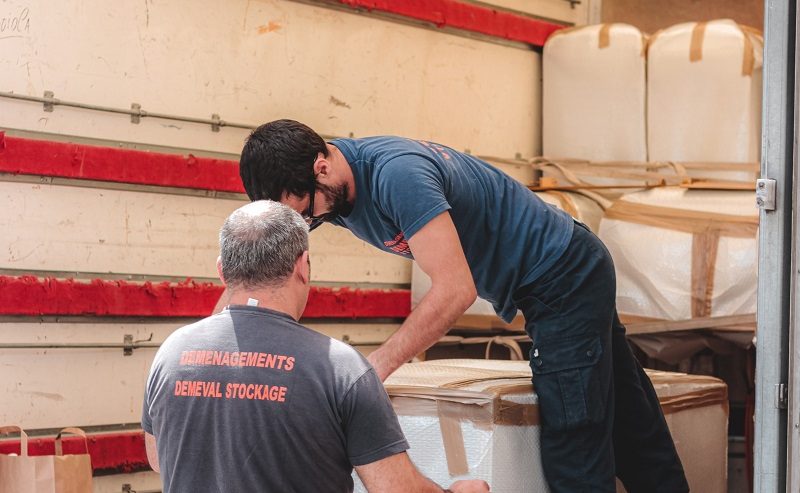Partial load delivery: know all about this method of transportation
With the popularization of delivery services, partial load delivery emerges as a method to reduce costs and optimize the transportation of packages.

Partial load delivery: the great revolution in delivery
Delivery is on the rise!
Before, it was practically exclusive to food services. But now, home delivery is already a reality for all types of commerce.
Even the service sector has already started to adapt to this new way of reaching clients.
With this increase in demand, there has also been a change in the way deliveries are made.
Generally, delivery companies and cooperatives are responsible for taking goods to the customer’s home.
Deliveries come from distribution centers, usually located in one place. These centers, often far from the customer’s address, made freight expensive and time-consuming.
But, nowadays, you can already count on autonomous delivery personnel to perform this service in a faster and more economical way.
Registered in mobile commerce platforms, they withdrawal orders directly with the shopkeeper. Then, proceed to the delivery address.
This type of service provides several benefits, such as:
• Faster delivery
• More dynamic delivery routes
• Flexibility in delivery times
One of the pillars of this new shipment of orders is the possibility for delivery personnel to work with Partial load.
Do you know what that means?
What is Partial Load?

Basically, partial load means that the delivery person can use the full capacity of the vehicle transporting more than one product, not necessarily from the same sender.
In other words, it doesn’t needneed to occupy the entire transportation space with only one delivery charge.
That way, one delivery person can work for several companies simultaneously. In addition, it can deliver to as many customers as possible on a single route, optimizing time and reducing costs with fuel. This directly impacts the freight cost.
Partial load transportation is used to deliver orders of smaller volume and weight, which are very common in e-commerce. Those are not large enough to occupy the entire space of a vehicle.
Full Truck Load or Less Than Truck Load?
Partial load transportation and delivery is in the middle between two other types of cargo transport:
FLF, or Full Truck Load is a mode of transportation in which the entire space is dedicated exclusively to a single load.
This mode is the most recommended for the transport of fragile, dangerous or large volume cargo. However, it is also more expensive.
This is because the delivery man, on his route, will be able to transport and deliver just one order.
In the LTL mode, Less Than Truck Load, the vehicle’s storage space is occupied by a large number of small loads.
This type of transport is the most advantageous for those who work with exports, or who need to deliver a large quantity of products to a single buyer.
LTL is generally the method employed for companies that need to take their orders to docks in shopping centers and ports or airports.
It usually employs large-capacity vehicles, and involves smaller routes, but at an often high cost, compared to other transport methods.
The partial load method lies between the FLF and LTL. The idea here is to carry out, in a practical and dynamic way, more than one order on a single route, which will then be delivered directly to clients elsewhere.
More dynamic delivery routes
In the transportation of partial loads, the route is defined by a series of factors, including:
• Delivery priority, which is defined by the customer;
• Storage and packaging conditions, as defined by the nature of the product;
• The proximity between the store and each customer’s address.
As the same delivery person is able to deliver to different customers, routes can be defined dynamically.
They can meet these criteria, or whatever else criteria the seller or customer can determine.
Load to Ride: an important concept for modern delivery
One of the important concepts that you should pay attention to when working with fractional loads is that of Load to Ride.
The idea here is that, after loading the cargo in the vehicle, the delivery man leaves directly for the delivery address provided by the customer.
This means that the product will pass through fewer intermediaries. This way, the chances of damage to the product are smaller than, for example, in deliveries made from distribution centers.
After all, in these centers the product goes through a series of processes until it reaches the freight vehicle. Afterwards, the professional still needs to handle the packages several times before locating which cargo needs to be delivered to each address.
Co-loading: reducing delivery costs
Another way to reduce costs and making deliveries more dynamic is through co-loading.
This means sharing the vehicle’s transportation space between two or more nearby companies.
Thus, in a single route, the delivery person can deliver from several suppliers. This reduces the number of trips and the total time required to complete all deliveries.
By using a single vehicle and a dynamic route, companies optimize expenses with delivery processes and please the customer with a faster shipping service.
Bet on the partial load transportation to deliver lighter packages
Partial load transportation is ideal for delivering packages that are light in weight, but still have considerable dimensions.
Delivering by Post Office can increase costs according to the dimensions of the package, in addition to a considerable increase in shipping time.
Partial load delivery solves this problem, emerging as a solution for companies that need to take their products to nearby customers without complications.
It is also the best way to make deliveries on nearby streets, or in a single neighborhood. Therefore, it is the most suitable for companies that work with delivery commerce.
Want to know more about some of the main benefits of working with partial load?
Benefits
For the company, the main benefit is undoubtedly the possibility that a single delivery person can perform all, or most, of the day’s deliveries at once.
This makes the process of dispatching goods faster, reducing the wait for a new delivery person with each new order.
For the customers, the delivery with partial load transportation represents more ease, knowing that they will receive the product as soon as possible.
Delivery commerce platforms, such as Delivery365, have effective tracking tools that show the customer where the delivery person is, and at which time the product will arrive.
The consumer will certainly feel more secure, and that security translates into loyalty for your brand!
Delivery people also benefit from this method of transporting packages.
Using this shipping mode, the self-employed worker guarantees as many deliveries as possible on a single route. This translates into more gains, with the least possible time and fuel expenses.
Special cares while managing partial loads
The main care to be taken with the delivery of partial loads is in handling the cargo.
Products must be placed inside the vehicle with care. In order for the cargo to be handled as few times as possible, it is ideal that it’s distributed within the vehicle’s transportation space according to the pre-determined route.
The customer’s name and delivery address must be checked more than once to avoid errors and confusion. Both on the service order and on the packaging, this information must be clearly and precisely indicated.
Products that are fragile or require special handling must be previously indicated to the delivery person.
In the case of delivery of food or perishables, liquids that may leak or other cargo that presents risks, it is essential to double the care with correct packaging.
Inform the delivery person of the exact dimensions of each package. This way, he is able to plan the distribution and organization of the items within the available space in the vehicle.
In conclusion: your company must adhere to this new mode of transportation

Still unsure whether the partial load is ideal for your company? Let’s check again some of the main reasons for adhering this new mode of transportation:
• More dynamic delivery, with better use of routes
• Cost reduction for your company and delivery personnel
• Possibility to share delivery costs with other companies
• Faster service for the customer, which translates into repeated purchases with your store
Partial load delivery brings immense advantages to customers, suppliers and delivery people.
It is also a method of distribution of goods that will spread within the delivery and e-commerce market even further in 2021.
It’s ideal for all types of business, in any branch of commerce. Clothing stores, toys, appliances and computer supplies, and even restaurants can save time and resources using this shipping method.
Partial load delivery is ideal for wholesalers, who need to distribute their products to the largest number of customers in the shortest possible time.
Don’t miss out on this revolution! Use partial load delivery together with the services of a delivery commerce platform that understands the market and is ready to bring your products and services to customers anywhere.
Count on Delivery365. Our smart and intuitive platform is the best way to take your company to the world of e-commerce.


